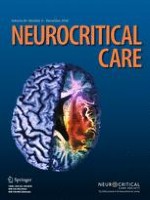Erschienen in:

10.08.2017 | Review Article
Malnutrition in Stroke Patients: Risk Factors, Assessment, and Management
verfasst von:
Toni Sabbouh, Michel T. Torbey
Erschienen in:
Neurocritical Care
|
Ausgabe 3/2018
Einloggen, um Zugang zu erhalten
Excerpt
Stroke is the fourth leading cause of death in the USA [
1] and one of the major causes of disability generating a massive economic burden [
2]. Ischemic strokes account for 65–85% of stroke patients in the Western world, and the rest are hemorrhagic strokes which are more disabling [
3]. Only 10–20% of hemorrhagic stroke patients will recover functional independence [
4]. In order to improve neurological and cognitive functions of stroke patients, numerous rehabilitation interventions are implemented, including nutritional interventions, in attempt to overcome the metabolic consequences of stroke [
5,
6]. …
